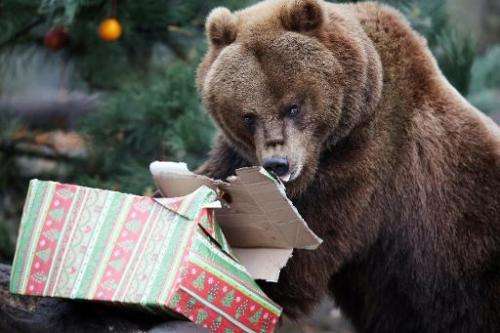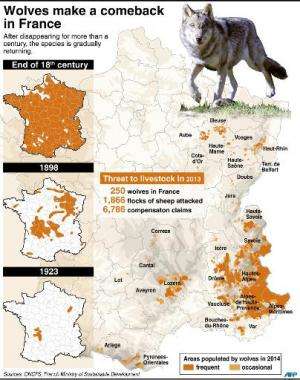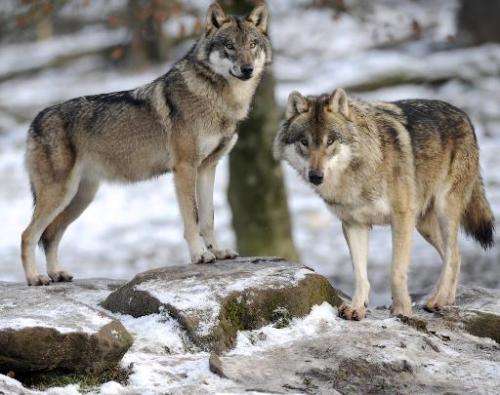Wolves, bears and lynx 'now plentiful in Europe' (Update)

After nearing extinction in Europe in the early 20th century because of hunting and shrinking habitats, large carnivores like the gray wolf, brown bear, lynx and wolverine are thriving once more.
So say the results of a study carried out across the continent, except Russia and Belarus, by an international team whose report was published Thursday in the US journal Science.
"The total area with a permanent presence of at least one large carnivore species in Europe covers 1,529,800 square kilometers (roughly one-third of mainland Europe), and the area of occasional presence is expanding," the authors wrote.
The study involved 76 scientists examining 26 countries.
Brown bears were the most numerous of the four species, with nearly 17,000 specimens and a permanent presence in 22 countries.
The gray wolf came next, with a population of more than 12,000 scattered across 28 countries, followed by the Eurasian lynx, 9,000 of which were to be found in 23 countries.
Wolverines were the scarcest of the four, with an estimated 1,250 of the cold-climate creatures found in three Nordic countries: Norway, Finland and Sweden.
Although most populations of these large predators have been on the rise or stable in recent years, some are on the verge of extinction, such as the gray wolves of Spain's Sierra Morena region, the Pyrenees bears or the lynx found in the Vosges region of France.

All four species of carnivores live and reproduce mostly outside protected areas, such as national parks, in human-dominated landscapes.
Conservation policies work
Their numbers suggest that they can coexist with humans in areas dominated by the latter, testifying to the success of European Union conservation policies, the authors wrote.
For instance, Europe today has twice as many wolves as the United States even though its territory is half the size of North America and its population twice as dense.
"Our results are not the first to reveal that large carnivores can coexist with people but they show that the land-sharing model for large carnivores (coexistence model) can be successful on a continental scale," the study stated.

In the US, by contrast, protected species often live far from human-inhabited ones, such as wolves of Yellowstone National Park.
The researchers said several factors explained the vitality of Europe's populations of large carnivores, including the replenishing of stocks of prey such as deer and wild boars, which provides them with ample food.
They also cited an exodus of people from rural areas in the 20th century, which allowed wolves, bears and lynxes to expand their territories.
But the report mainly attributed the success to laws aimed at preserving species of wild animals and their habitats, such as the Berne convention of 1979.
More information: "Recovery of large carnivores in Europe's modern human-dominated landscapes," by G. Chapron et al. Science, www.sciencemag.org/lookup/doi/ … 1126/science.1257553
Journal information: Science
© 2014 AFP

















